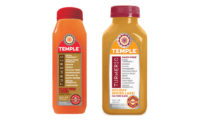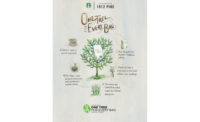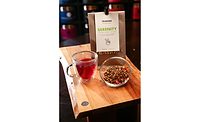Now out of the recession, consumers are making their way back to the foodservice channel but without the expectations or spending habits as before. Foodservice vendors are adapting to these changing trends both where consumers choose to spend their money and on the types of items they choose to spend it on, according to analysts. Gone are the days of low-calorie meals with a traditional beverage. Consumers now want the best value for their money that also will benefit their health and provide them with a unique experience.
“The U.S. foodservice industry saw a 3.1 percent increase in value growth in 2014, which is an improvement from 2013 but still down from recent highs — 3.4 percent — in 2012,” says Elizabeth Friend, senior global foodservice analyst with Euromonitor International, Chicago. “Generally speaking, consumer foodservice is steady but slow, and this has been the case for many years. Restaurant chains are now fighting to win share from other brands and from other categories, so it’s become a zero-sum game with lots of fierce competitors.”
Despite growth in employment numbers and disposable income, consumers are cautious when it comes to spending. This is especially true with younger consumers who were hit harder by the recession. According to Chicago-based Mintel’s January 2015 report “Dining Out: A 2015 Look Ahead – US,” younger consumers — from 18 to 24 years old — who typically are frequent consumers to foodservice establishments continue to search for ways to save money, especially when dining out.
“Consumers want to make sure they’re getting the most out of their purchases, which has made them highly discriminating when it comes to what they’re willing to spend their money on in foodservice,” Euromonitor’s Friend says. “Beverages play a key role here, because they offer consumers the experience of dining out while keeping the overall cost of a transaction low.”
Consumers also have turned away from ordering carbonated soft drinks with their meals for two reasons: cost and health, analysts note. Consumers don’t see the value in ordering a soft drink because they can get the same thing at home for less, adds Bonnie Riggs, restaurant industry analyst, NPD Group, Port Washington, N.Y.
Shift in trends
Vendors are responding to these consumer habits by offering specialty beverages such as coffees and iced teas, seasonal and local beverages and even suggesting drink-food pairings. “More consumers are looking for more than a meal accompaniment,” says Joe Pawlak, senior vice president for Chicago-based Technomic Inc.
Even fast food dining is feeling this shift. Previously, it was enough to provide the bundle of a sandwich, fries and beverage but now even fast-casual establishments are offering specialty beverages such as coffees and smoothies.
Restaurants are differentiating themselves by offering signature beverages — something the consumer can only get at that establishment. Limited-time offerings are another great way vendors are distinguishing themselves, analysts note. “Seasonal offerings like Starbucks Pumpkin Latte are a great way to generate interest,” NPD’s Riggs says. “Flavoring spices are a great way to add entertainment value to offerings.”
These specialty alcohol-free products are capturing a larger share of the alcohol-free menu space and play a key role in driving beverage profitability, says Mike Ginley, partner, NextLevel Marketing, Westport, Conn. “Premium alcohol-free beverages offer operators a very important profit trade-up opportunity over tap water or fountain drinks. Unlike fountain drinks or tap water, these premium products are sold at premium prices and, perhaps most importantly, they are single-serve products with no free refills.”
Specialty beverages give consumers an experience with little investment. “Consumers want their dining experience to be interesting and exciting — something they don’t find when they order tap water or soft drinks,” Euromonitor’s Friend says. “All of these premium beverages help fulfill that need.”
Showcasing specialty offerings, Peet’s Coffee & Tea, a wholly owned subsidiary of JAB Holding Co., announced in June that its foodservice locations will offer cold brew iced coffee drinks at its café locations nationwide. All of Peet’s iced coffee drinks are now made using its new cold-brew method, replacing the traditional process of hot brewed coffee that is chilled with ice, the company says.
Peet’s cold brew coffee is made by steeping fresh, ground coffee in cold, filtered water for at least 12 hours, according to the company. Because no heat is used during brewing, the brighter, acidic tones of hot-brewed coffee are muted, it adds.
“Iced coffee is a cultural phenomenon and the accelerated popularity of cold brew, especially among millennials, is similar to the early craft beer movement,” said Tyler Ricks, chief marketing officer of Peet’s Coffee, in a statement. “Peet’s started the craft coffee revolution nearly 50 years ago, and we’ve applied our expertise to craft a special cold brew that stands apart from the competition. In fact, we’re deliberately making our cold-brew process the ‘new standard’ for all Peet’s iced coffee drinks moving forward as it delivers a smoother, naturally sweeter, and better cup of iced coffee.”
The specialty coffeehouse also added a new handcrafted cold-brew beverage: The Black Tie. Influenced by Vietnamese and New Orleans coffee traditions, the cold-brew coffee is a sweet, creamy offering made with Baridi cold-brew coffee, sweetened condensed milk, house-made chicory simple syrup and half-and-half, the company says.
Foodservice establishments also have found ways to utilize “holidays” and their beverage portfolio to entice consumers. To celebrate National Iced Tea Day, Teavana, a division of Seattle-based Starbucks Coffee Co., offered a free Pineapple Berry Blue Iced Tea to consumers on June 10 while supplies last. The promotion was to encourage iced tea drinkers to reimagine and up-level their iced tea experience, the company says.
Pairing suggestions also allow vendors to showcase how beverages complement their food portfolios. Expanding on the familiar wine pairing trend, vendors have expanded those into cocktail and beer pairings, and consumers now expect to see these pairings, NextLevel’s Ginley notes.
However, specialty drinks don’t necessarily need to be complex but rather they need a new approach to a traditional product. Adding to the dining experience, Atlanta-based The Coca-Cola Co.’s Freestyle and Purchase, N.Y.-based PepsiCo Inc.’s Pepsi Spire allow consumers to play with flavors. These two machines have been positively received by consumers, analysts note.
“The dispensers are fun for the consumers to use and they really stand out visually to drive impulse purchase,” NextLevel’s Ginley adds. “In my opinion, these interactive dispensers are the key to driving growth for fountain beverages in the foodservice channel.”
However, the craft soda market is the niche to watch, Technomic’s Pawlak says, due in large part to the explosion of the craft beer market.
Euromonitor’s Friend agrees and finds craft soda as a great way for restaurants to set themselves apart. “Yum! Brands’ Taco Co. test offers a great example of how beverages are being used: They have bottled craft sodas from all over the country that pair with their various tacos, and they also have really indulgent milkshakes with toppings (such as a strawberry pie shake topped with pieces of pie crust),” she says. “Both of these add a lot of value in the eyes of the consumer, especially when it comes to craft soda pairings. These turn dining into an event and that’s something consumers are really looking for right now.”
A focus on health
Consumers interest in better-for-you options also is shifting from low-calorie offerings to those with little to no preservatives and fresh ingredients. Consumers are more likely to order a beverage because it is good for them than a beverage that has no calories, analysts note.
“Fast casual dining has done a great job at meeting this demand,” Technomic’s Pawlak says. “The fastest growing beverage is one that has a message: free trade coffee, healthy smoothies, clean bottled water.”
In fact, fast casual is the fastest growing segment of the foodservice industry at 10 percent value growth year-over-year due to vendors meeting consumer demands, according to Euromonitor data. “Fast casual is simply what consumers are excited about right now — they want casual, flexible dining experiences that aren’t too expensive but still feel exciting,” Friend adds.
Healthy options also are encom-passing alcohol beverages. “The trend is most noticeable on cocktail menus where artisanal and seasonal cocktails made with fresh ingredients have become increasing important,” Ginley says. This trend will continue to grow as more use of local/fresh ingredients and handcrafted local beverages continue to grow, he adds.
Future is bright
The foodservice channel has expanded and the competition now includes prepared foods in grocery stores like Whole Foods Market. The key to survival relies on foodservice channel upping its game, Technomic’s Pawlak says. “You will see things like the opportunity to order a beverage like a smoothie or coffee while you wait in line,” he notes.
Vendors will need to offer more fresh and local ingredients with a focus on being handcrafted. This includes both alcohol-free and alcohol drinks.
“The outlook is positive as long as vendors are up to the challenge to change offerings and be creative. In 2015, foodservice operators will have to focus on making their dining-out experience stand out, whether through a unique menu, attentive service, enticing loyalty program or affordability. They will have to convince consumers that their establishment is worth the indulgence,” notes Julia Gallo-Torres, foodservice analyst, in Mintel’s report.
Every segment is competing from fast food, hospitals, hotels, grocery stores and more. “Vendors need to differentiate and innovate,” Pawlak says. “Offer new products and signature beverages that are only offered by you.”







